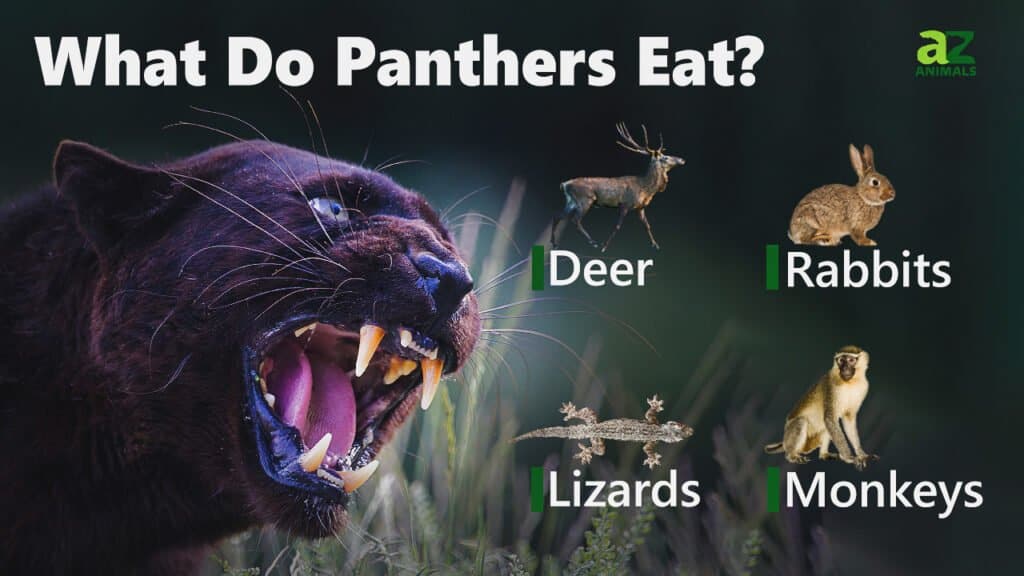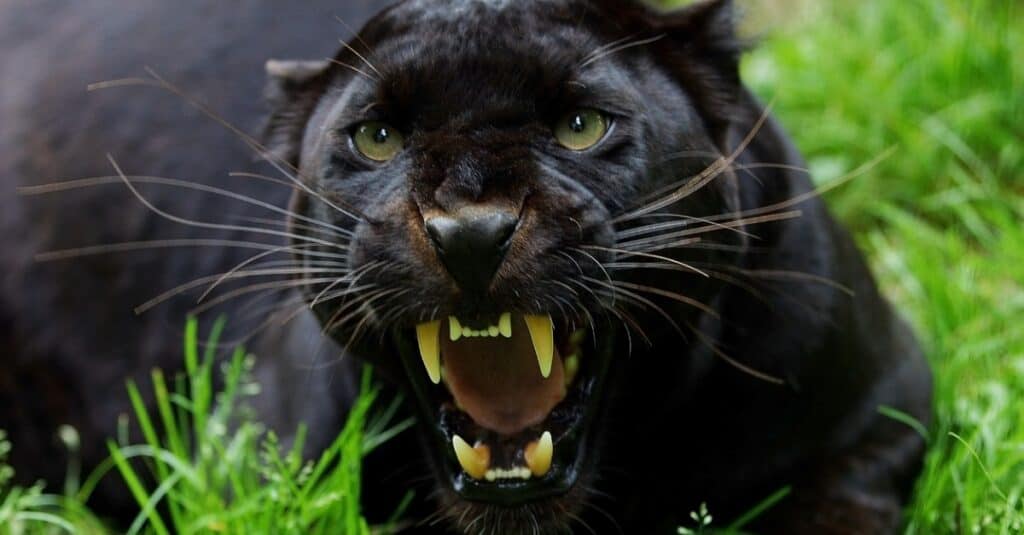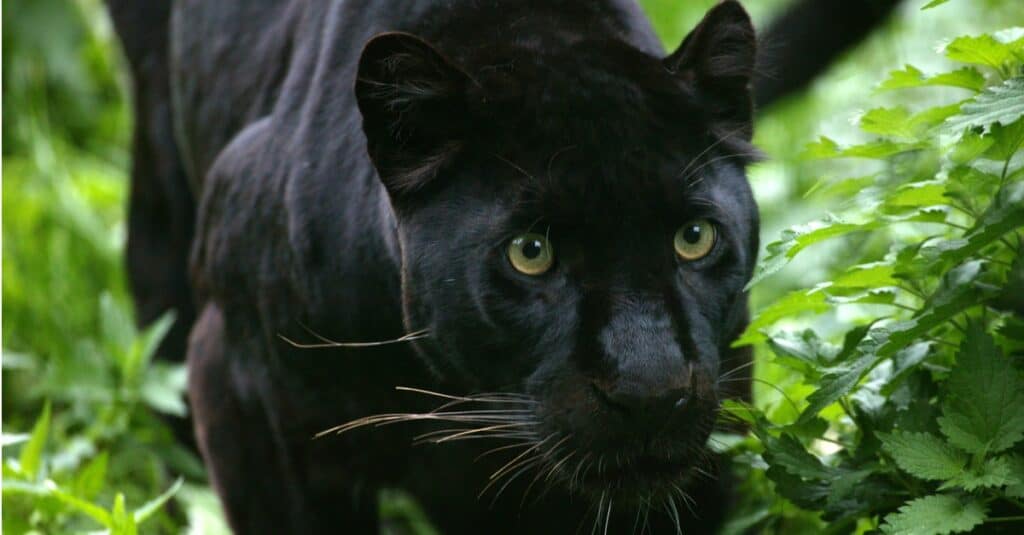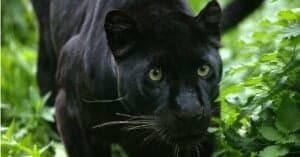
Panthers are fierce yet elegant hunters with striking features, namely their distinct black fur and piercing yellow eyes. These big cats mostly inhabit tropical forests in Africa and Asia, stalking their prey with incredible precision and strength. We’ll cover what panthers eat soon, but there are a few things you should know about them first to clear up confusion about what kind of animal they are.
Contrary to popular belief, panthers are not exactly their own specific species but rather a group of large cats with black fur that fall under the Panthera genus. The word “Panther” actually refers to any leopard or jaguar with melanism, or high amounts of black pigment in their fur. Melanism is caused by a recessive gene in leopards and a dominant gene in jaguars.
(There is also the “Florida panther” which is a subspecies of mountain lion in North America. As you can see, the term “panther” is used for a number of meanings!)
There are two main types of panthers, the melanistic jaguar (Panthera onca) and the melanistic leopard (Panthera pardus). Their diets are very similar, so let’s take a look at what these intimidating yet captivating predators eat from day to day in the wild.
What Foods Do Panthers Eat?

A black panther shows off its massive fangs that it uses to tear apart prey.
©iStock.com/slowmotiongli
Panthers are nocturnal carnivores, meaning they are mostly active at night and only feed on the meat and flesh of other animals. But what do panthers eat, exactly? The answer is mostly small-to-medium-sized herbivorous animals living within their humid forest and jungle habitats. The highest percentage of a panther’s diet is composed of wild hogs and boars, raccoons, and deer. Other animals they eat include:
Incredibly, this list doesn’t even come close to covering all of the foods a panther will eat. Since they are apex predators and aren’t very picky eaters, panthers will feed on just about any animal that moves. In fact, studies have shown that Panthera onca individuals commonly eat as many as 85 different species of animals of varying sizes, from small birds and reptiles to large mammals.
How Do Panthers Hunt Their Prey?

A black panther sizes up a photographer with its intimidating gaze
©iStock.com/idigitize
Panthers are expert hunters who mainly stalk their prey slowly and quietly, waiting for the right moment to strike. They have extremely strong jaws and sharp teeth that can crush the skulls of even large mammals and reptiles with ease!
While many predatory animals will chase their prey for long distances, panthers prefer to ambush their prey after stalking them for hours or even days. Instead of chasing their prey until it becomes too tired to keep running, a panther will follow their prey silently, staying out of sight and only making themselves known mere seconds before they strike.
The bottom line here is panthers rely on stealth and speed to capture their food. Their dark fur also helps them to blend in with the darkness of the night, which is when they prefer to hunt due to their nocturnal nature.
Do Panthers Have Any Predators?

A
Panthera pardusindividual waiting for the perfect moment to strike its prey
©iStock.com/slowmotiongli
Because panthers are apex predators, they don’t really have any predators to keep an eye out for (other than perhaps humans). However, they do have quite a bit of competition for food from other large carnivores, primarily other big cats like lions and tigers.
In some cases, these big cats will even prey upon and eat each other. This is very rare, though, and they usually only resort to this kind of behavior when they are desperate, starving, and unable to find any other smaller animals to feed on. Still, panthers and other big cats are in fierce competition for resources and often fight each other savagely over their prey!
The photo featured at the top of this post is © iStock.com/slowmotiongli
Thank you for reading! Have some feedback for us? Contact the AZ Animals editorial team.






